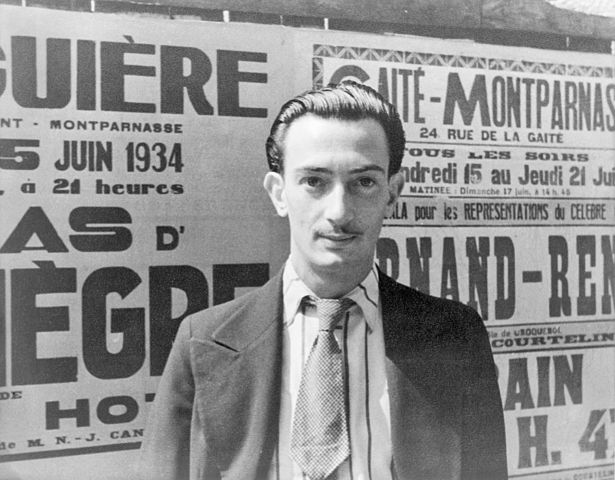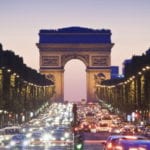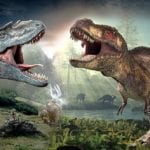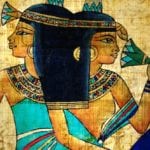 History
History  History
History  Animals
Animals Ten Times It Rained Animals (Yes, Animals)
 Mysteries
Mysteries 10 Devastating Missing Child Cases That Remain Unsolved
 Creepy
Creepy 10 Scary Tales from the Middle Ages That’ll Keep You up at Night
 Humans
Humans 10 One-of-a-kind People the World Said Goodbye to in July 2024
 Movies and TV
Movies and TV 10 Holiday Movies Released at Odd Times of the Year
 Politics
Politics 10 Countries Where Religion and Politics Are Inseparable
 Weird Stuff
Weird Stuff 10 Freaky Times When Famous Body Parts Were Stolen
 Miscellaneous
Miscellaneous 10 Interesting Things Manufacturers Stopped Making and Why
 Gaming
Gaming 10 Funny Tutorials in Games
 History
History 10 Desperate Last Stands That Ended in Victory
 Animals
Animals Ten Times It Rained Animals (Yes, Animals)
 Mysteries
Mysteries 10 Devastating Missing Child Cases That Remain Unsolved
Who's Behind Listverse?

Jamie Frater
Head Editor
Jamie founded Listverse due to an insatiable desire to share fascinating, obscure, and bizarre facts. He has been a guest speaker on numerous national radio and television stations and is a five time published author.
More About Us Creepy
Creepy 10 Scary Tales from the Middle Ages That’ll Keep You up at Night
 Humans
Humans 10 One-of-a-kind People the World Said Goodbye to in July 2024
 Movies and TV
Movies and TV 10 Holiday Movies Released at Odd Times of the Year
 Politics
Politics 10 Countries Where Religion and Politics Are Inseparable
 Weird Stuff
Weird Stuff 10 Freaky Times When Famous Body Parts Were Stolen
 Miscellaneous
Miscellaneous 10 Interesting Things Manufacturers Stopped Making and Why
 Gaming
Gaming 10 Funny Tutorials in Games
10 Bizarre Facts About Salvador Dali
Salvador Dali was one of the most famous men of the 20th century for more than a few reasons. Obviously his art is iconic, but it was his extremely odd personality, fashion sense, trademark mustache, and showmanship that ensured people remembered him when he blew through town. But was he mad or just artistic? As you’ll see, there’s a case to be made for either.
10He Believed He Was The Reincarnation Of His Dead Brother

One possible explanation for Dali’s bizarre lifestyle may lie with his peculiar childhood. Before Dali was born, his mother had given birth to another child, also called Salvador Dali. Unfortunately, the first Salvador died of a stomach infection at just 22 months old. Nine months later, the second Salvador Dali was born. Since the second Salvador heavily resembled the first and had been born exactly nine months later, his parents began to harbor a suspicion that he was actually their dead child reborn.
When Dali was five, his parents took him to the first Salvador’s grave and informed him of their belief that he was the reincarnation of his own dead brother. This had a huge psychological effect on Dali—much of his later work would contain allusions to the dead child he believed was the best part of him. The traumatic experience may also help explain some bizarre events that happened that same year . . .
9Childhood Sadism

For Dali, even from a very young age, pleasure and pain were pretty much the same thing. At least that’s how Dali would justify his childhood habit of attacking people for no apparent reason. The worst example occurred while he was out walking with a friend and noticed that a safety railing was missing from the bridge they were crossing. Observing that there was nobody around, Dali decided to throw his friend off the bridge. The boy fell almost 5 meters (16 ft) onto sharp, jagged rocks and was seriously hurt. Did Dali feel any guilt or remorse over this? Well, as he watched his friend’s mother caring for the injured boy, the five-year-old Dali sat calmly, smiling and eating cherries as she passed with bowl after bowl of bloody water. Guilt? Probably not.
Later that year, another bizarre incident occurred while Dali was caring for a wounded bat. One day, he checked on the bat and saw that it had been overwhelmed by ants and was being slowly eaten alive. Dali’s reaction was to pick up the bat and bite into it and the ants.
8Avida Dollars
Within the art community, Dali was renowned for his love of making money. Because of this, he was sometimes sneeringly called “Avida Dollars,” which is both an anagram of Salvador Dali and a reference to his greed. Dali would do pretty much anything to make a buck. He designed the famous Chupa Chups lollipops logo and the 1969 logo for the Eurovision Song Contest. He also appeared in ads for Lanvin chocolates, brandy, and even alka seltzer.
But those were just the legal ways he made cash—he was also a bit of a con man. He justified the enormous price tag on one painting by telling a rich customer that the paint had been mixed with the venom of a million wasps. It hadn’t. Another scam of Dali’s happened when he was contacted by Yoko Ono, who requested a strand of hair from his mustache. In return, Dali demanded $10,000. When Yoko coughed up, Dali sent her a dried blade of grass instead, since he was worried Yoko might use the hair for witchcraft. Seriously.
Dali also had a novel way of avoiding restaurant bills. He frequently invited large groups of friends out for expensive lunches. When it came time to pay, Dali would cheerfully write a check for the full amount. When he knew the waiter was looking, he would casually doodle on the back of the check, knowing that nobody in their right mind would ever cash a check with an original sketch by Salvador Dali on it. So the check would go uncashed, and Dali would get away with not paying the bill.
7Stunts

Aside from being an artist, writer, scientist, and whatever else he decided to be when he woke up in the morning, Dali was a showman. Sometimes, his stunts could be even more striking than his art. For instance, Dali once delivered a lecture wearing a full deep-sea diving suit, which he refused to take off, almost suffocating as a result. In 1955, he arrived at a speech in a Rolls-Royce full of cauliflowers because he was fascinated by their shape.
In order to sell his book, The World of Salvador Dalí, he lay in a hospital bed in a Manhattan bookstore surrounded by fake doctors and nurses, hooked up to a machine that measured his brain waves. Anyone who bought a copy of the book also got a copy of the machine’s readings. He later went back to cauliflowers, this time filling a limo with them and driving through the streets of Paris, handing them out to very confused Parisians.
6His Weird Fascination With Hitler

Dali was obsessed with Hitler in a way that even Hitler would probably have found unsettling. During the Nazi’s rise, most surrealist artists sought to distance themselves from fascism and Hitler. Dali, on the other hand, began to paint him. One painting of Dali’s which at first appears to be a landscape is actually a photograph of Hitler turned on its side and made to look like a placid lake. Later, when asked about his fascination with Hitler, Dali said: “I often dreamed about Hitler as other men dreamed about women.”
In case you’re thinking this couldn’t get any creepier, don’t worry, it does. Dali went on to say: “Hitler turned me on in the highest…His [Hitler’s] fat back, especially when I saw him appear in the uniform with the Sam Browne belt and shoulder straps that tightly held in his flesh, aroused in me a delicious gustatory thrill originating in the mouth and affording me a Wagnerian ecstasy.” One of Dali’s later paintings is simply called Hitler Masturbating and, sadly, there’s nothing surreal about the name—it shows exactly that. Thankfully, Hitler’s manhood is largely hidden behind some tiny horses with metal legs.
5Dali Atomicus

The result of a collaboration between Dali and famous photographer Philippe Halsman, Dali Atomicus is an ode to Dali’s famous painting Leda Atomica (which can be seen on the right of the photo). The photo shows Dali, furniture, and several cats suspended in mid-air while a stream of water snakes through the action like a deleted scene from Inception. It’s an amazing picture, considering it was made in 1948, long before CGI and Photoshop could have created the effect.
Instead, the picture was created the old-fashioned way—it’s all real. In order to achieve the effect, the furniture was held up by wires while Dali jumped and someone out of the frame hurled a bucket of water and several live cats into the shot. Unfortunately, the desired effect couldn’t be achieved in one take, or even two. It had to be done a staggering total of 28 times. Bear in mind that after each shot, some poor person (most likely the ’40s equivalent of an intern) would have had to round up the scattered, terrified cats, then throw them at the camera again.
4Dali’s Inspiration

Looking at Dali’s paintings, you might suspect that they were the result of heavy psychotropic drug use. Yet, Dali famously stated, “I don’t do drugs. I am drugs.” So where did he get his inspiration if not from drugs? Well, Dali had some tricks for making himself more creative. One involved a tin plate and spoon. Dali would sit in a chair holding the spoon above the plate and doze off. As he fell asleep, the spoon would drop onto the plate, making a noise loud enough to wake the artist in time to jot down the surreal images he saw in his dreams.
Other times, Dali would stand on his head until he almost passed out, allowing him to become semi-lucid. Dali’s most famous technique was called the “Paranoiac-Critical Method.” This involved trying to create a self-induced paranoid state, allowing him to draw irrational relationships between unconnected objects and to depict the landscape of his own subconscious mind.
3His Unusual Marriage

In August 1929, Dali met the love of his life: Elena Ivanovna Diakonova, better known as Gala. Unfortunately, Gala was already married to the French surrealist poet Paul Eluard. Dali wasn’t discouraged: “She was destined to be my Gradiva, the one who moves forward, my victory, my wife.” Since Gala and Eluard had what we might now term an “open marriage”—they had previously spent three years in a menage a trois with the artist Max Ernst—there was little to impede her relationship with Dali. After divorcing Eluard (although they apparently continued a sexual relationship), Gala married Dali in 1934. They would remain together until her death in 1982.
While it wasn’t exactly a traditional marriage—both continued to see other people—the relationship was apparently a happy one. Gala became Dali’s muse and business manager, her financial shrewdness supporting his extravagant lifestyle. The partnership was so important that Dali would frequently sign art with both of their names. In 1968, Dali bought Gala a castle in Spain, which she accepted on the condition that he could only visit her there after obtaining her permission in writing. That might sound unusual—but wouldn’t anyone need some time off if they were married to Salvador Dali?
2The Royal Heart
Despite eccentricity that sometimes bordered on complete and utter lunacy, Dali was a genius. Nowhere is this more apparent than the Dali Joies, a collection of jewelry designed by Dali in collaboration with an American millionaire named Cummins Catherwood. The wealthy Catherwood supplied millions of dollars’ worth of precious stones, which Dali incorporated into a number of exquisite pieces. Using Dali’s designs, the collection was produced in New York under the supervision of Argentinean silversmith Carlos Alemany. In total, 39 pieces were made, subsequently changing hands numerous times before finally being sold to the Salvador Dali Foundation for 5.5 million euros (nearly $7 million) in 1999.
The central piece is The Royal Heart. Crafted from pure gold and encrusted with an amazing 46 rubies, 42 diamonds, and two emeralds, the most amazing thing about The Royal Heart is the unsettling way it actually beats like a live human heart. Be warned: The video above may give you nightmares.
1The Alice Cooper Hologram
Dali had a lot of famous friends, spending time hanging out with Elvis Presley, John Lennon, David Bowie, Pablo Picasso, and even Sigmund Freud. But probably his weirdest acquaintance was with rock legend Alice Cooper. In 1973, Dali heard about Cooper and became fascinated by his stage show, which was partly inspired by Dali’s work. Naturally, the artist asked for a meeting with Cooper and his manager. According to Cooper, Dali turned up wearing a giraffe-skin coat, sparkly socks acquired from Elvis, and curly, elastic boots. He ordered a cup of hot water, which he proceeded to top up from a jar of honey he kept in his pocket, then he cut the dripping strand of honey with a pair of scissors he kept in his other pocket. Dali was accompanied by an entourage of beautiful teenagers dressed in robes who said nothing.
Things got weirder when Dali gave Cooper a plaster sculpture of his brain, crowned by a chocolate eclair with real ants running down the middle—and then asked Cooper to model for him. Cooper ended up doing so under armed guard, since he was wearing a diamond tiara provided by Dali worth $2 million. At the end of it, Dali had created an amazing revolving hologram of Cooper covered in diamonds and biting the head of a Venus de Milo statuette. He accomplished this by using lasers to capture a three-dimensional image.
Aaron is a film student who occasionally freelances. You can join him on Twitter here.








